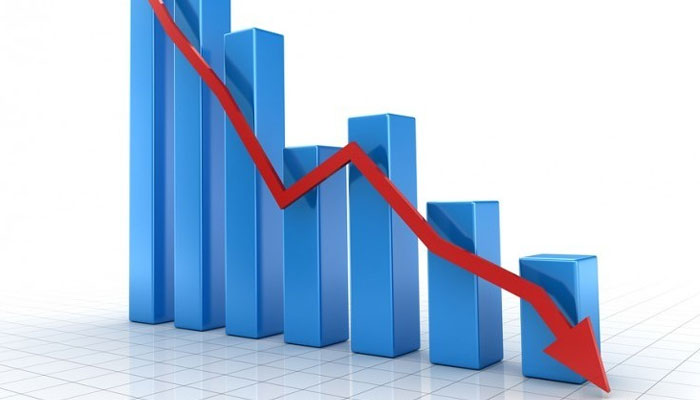Inability to generate desired revenue, meet expenses: Centre’s fiscal woes multiply
ISLAMABAD: Amid increasing discomfort of the powerful elites with the 18th Amendment and NFC award, the fiscal woes of the central government are multiplying because of its inability to generate the desired revenue and rationalize expenditures.
Simultaneously, the phenomena of ‘statistical discrepancy’ has again re-emerged on the fiscal front of the federal government, as it sharply rose to Rs781 billion in first nine months (July-March) of the current fiscal year 2019-20 against just Rs 22 billion in the corresponding period last year.
The amount of discrepancies had decreased in last couple of years but it re-emerged with the start of the current fiscal year and now it’s mounting at the supersonic speed. The increasing fiscal woes show that now the country’s total revenues are eaten up by debt servicing and defense after transferring resources to provinces under NFC Award.
For meeting all other heads of expenditures such as running of the government including salaries, pensions, development, and subsidies are managed through loans from domestic and external avenues.
The latest data of fiscal operation for first nine months (July-March) for 2019-20 showed that the debt servicing continued to remain the single largest ticket item on expenditures side as it consumed Rs1879.71 billion out of total collected revenues of Rs4,689 billion.
Out of total revenues of Rs3,044 billion collected bythe FBR, the provinces got share of Rs1931 billion through the federal divisible pool in shape of NFC Award. Then the remaining federal revenues, including the FBR and nontax revenues, could hardly meet the requirements of debt servicing and defense.
This indicates that the federal government starts its budgeting from minus and it has to obtain loans to fulfill the requirements of other expenditures heads. The higher discount rates that remained into bracket of double digit had increased requirement of debt servicing manifold as the data also shows that it consumed major chunk of the resources of the federal government.
The budget deficit that is considered as mother of all economic ills stands at Rs1,686 billion equivalent to 3.8 percent of Gross Domestic Product (GDP) during the first nine months of the current fiscal year against 5 percent of GDP in the same period of the last financial year. However, the primary balance that mainly concerns the IMF stands at just 0.4 percent of GDP. But the overall deficit that stood at 8.9 percent of GDP on eve of the last fiscal year 2018-19 that was now projected to escalate to over 9.6 percent of GDP in the aftermath of COVID-19 pandemic till end June 2020.
The fiscal operation for July-March period for 2019-20 shows that the total fetched revenues stood at Rs4,689.87 billion out of which the federal tax revenues stood at Rs3,273 billion, provinces Rs321.219 billion and nontax revenues of Rs1,019 billion.
Among nontax revenues, the government earned more money through the petroleum levy fetching Rs198 billion in nine months of the current fiscal so far against Rs141 billion in the same period of the last financial year.
Total expenditures incurred in first nine months escalated to Rs 6376 billion out of which current expenditures remained the largest head by consuming Rs5,611 billion. Out of total current expenditures, the mark-up of loans on both domestic and external fronts consumed Rs1879.712 billion than defense consuming Rs802.4billion
The federal development expenditures through PSDP stood at Rs340.4 billion, provincial development expenditures Rs382 billion and other development expenditures Rs29 billion.
-
 Andrew Mountbatten Windsor Has Staff From 'big Brother' For All His Needs
Andrew Mountbatten Windsor Has Staff From 'big Brother' For All His Needs -
 Perrie Edwards And Alex Oxlade-Chamberlain Welcome Second Child
Perrie Edwards And Alex Oxlade-Chamberlain Welcome Second Child -
 Meryl Streep To Return In 'Mamma Mia 3'?
Meryl Streep To Return In 'Mamma Mia 3'? -
 James Cameron Weighs In On Debates He Still Has About 'Titanic' Raft Scene
James Cameron Weighs In On Debates He Still Has About 'Titanic' Raft Scene -
 'Star Wars' Director Speaks Out Against 'scared' Comment
'Star Wars' Director Speaks Out Against 'scared' Comment -
 Andrew Mountbatten Windsor Braves Through 'element Of Tragedy' Im Exile
Andrew Mountbatten Windsor Braves Through 'element Of Tragedy' Im Exile -
 Wayne Brady On How Decision About His Sexuality Has Made Him A Better Parent
Wayne Brady On How Decision About His Sexuality Has Made Him A Better Parent -
 Andrew Mountbatten Windsor, Sarah Ferguson To Jump At 'comeback' Chance
Andrew Mountbatten Windsor, Sarah Ferguson To Jump At 'comeback' Chance -
 Prince William, Kate Middleton Have Reset Their 'love' After Cancer
Prince William, Kate Middleton Have Reset Their 'love' After Cancer -
 Prince William, Meghan Markle Make Parallel PR Moves
Prince William, Meghan Markle Make Parallel PR Moves -
 Spencer Pratt Recalls Meeting Ryan Gosling Before Fame
Spencer Pratt Recalls Meeting Ryan Gosling Before Fame -
 Meghan Markle's As Ever Facing Branding Problems?
Meghan Markle's As Ever Facing Branding Problems? -
 Kate Middleton Is More Relaxed In 'Wellington Boots Than Diamond Tiara'
Kate Middleton Is More Relaxed In 'Wellington Boots Than Diamond Tiara' -
 Gaten Matarazzo Addresses Important Fans Query About 'Stranger Things'
Gaten Matarazzo Addresses Important Fans Query About 'Stranger Things' -
 Prince William's Latest Move Reveals Rift Is Strong With Prince Harry
Prince William's Latest Move Reveals Rift Is Strong With Prince Harry -
 Princess Eugenie Becomes Second Royal After Meghan To Feature In Viral Trend
Princess Eugenie Becomes Second Royal After Meghan To Feature In Viral Trend




